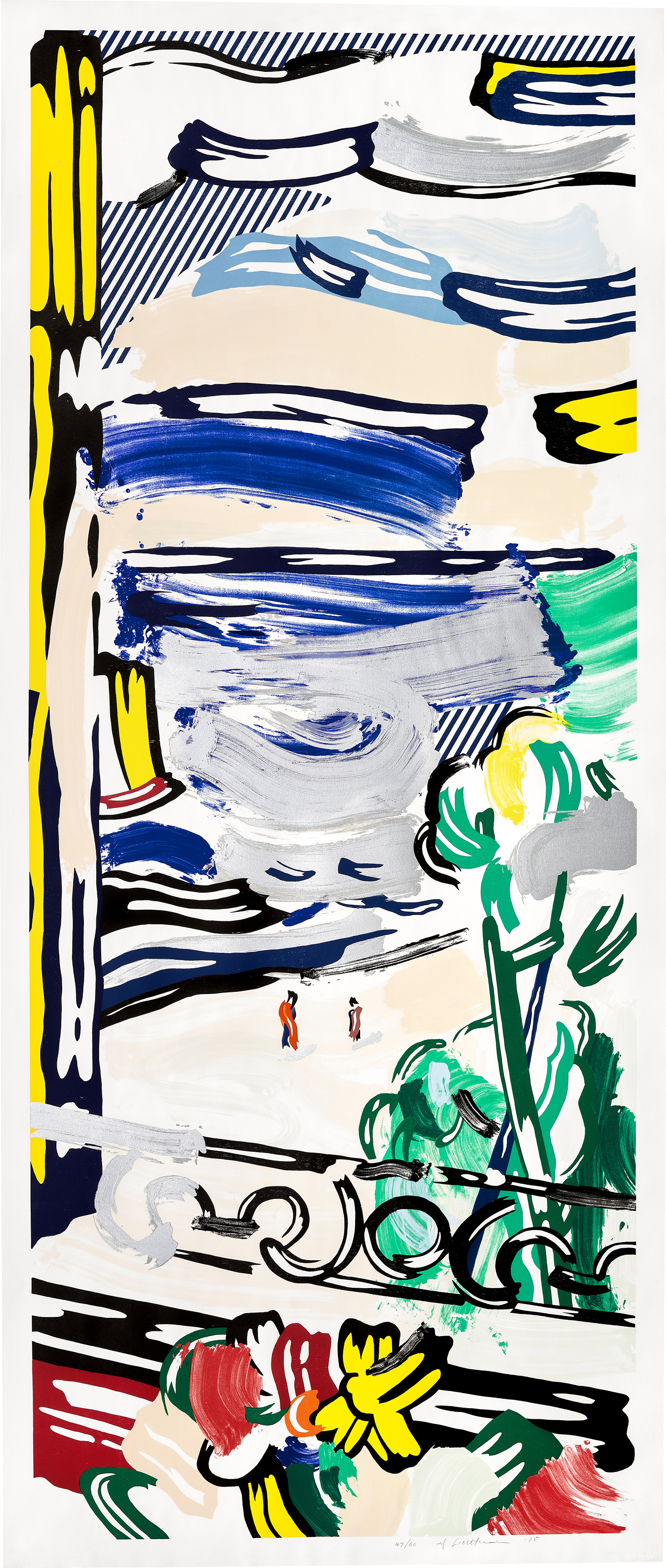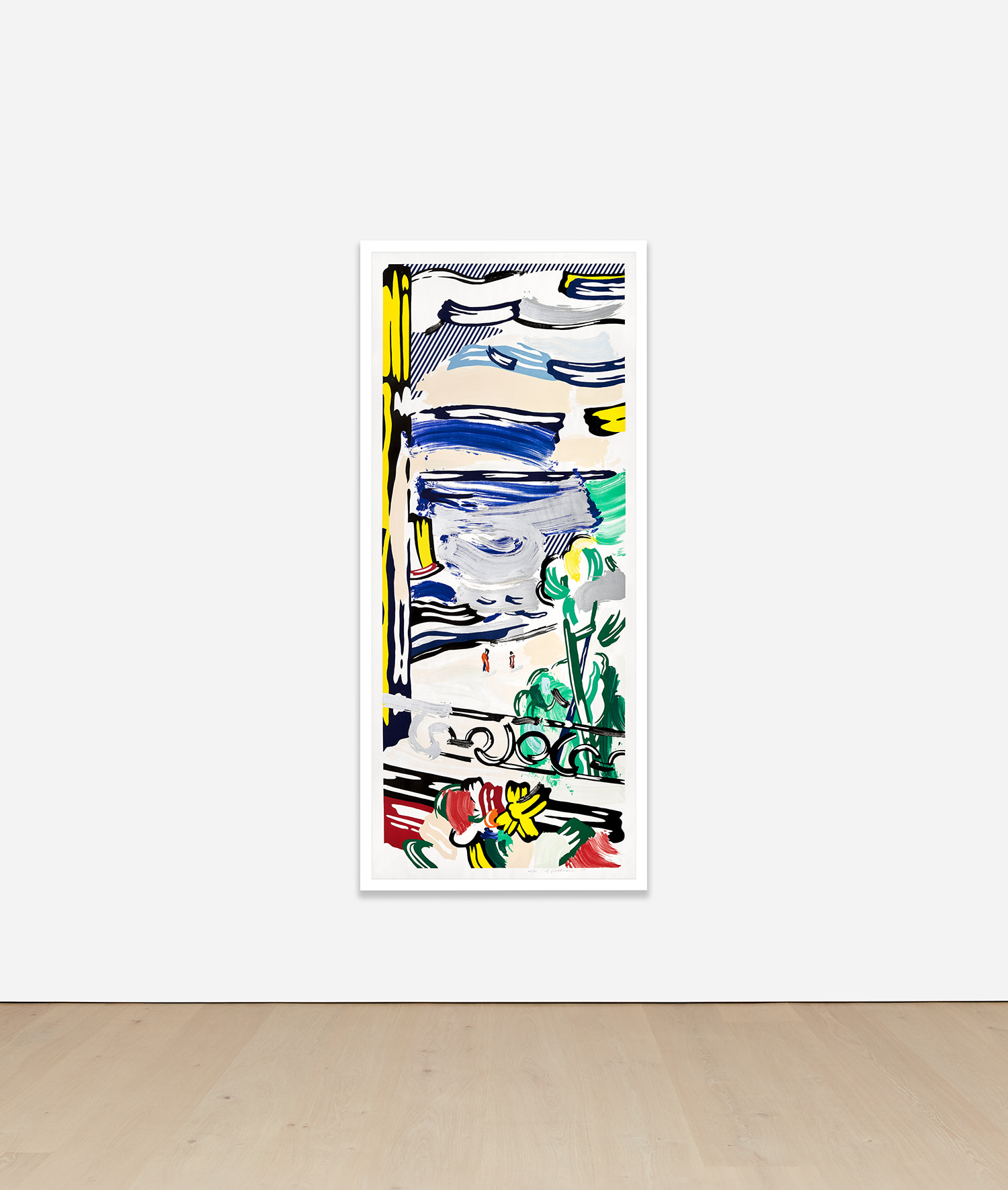



Property from a Private European Collection
124
Roy Lichtenstein
View from the Window, from Landscapes (Gemini G.E.L. 1257, C. 215)
1985
Lithograph, woodcut and screenprint in colours, on Arches 88 paper, with full margins.
I. 193.5 x 77 cm (76 1/8 x 30 3/8 in.)
S. 201.2 x 85.4 cm (79 1/4 x 33 5/8 in.)
S. 201.2 x 85.4 cm (79 1/4 x 33 5/8 in.)
Signed, dated and numbered 47/60 in pencil (there were also 11 artist's proofs), published by Gemini G.E.L., Los Angeles (with their blindstamps), framed.